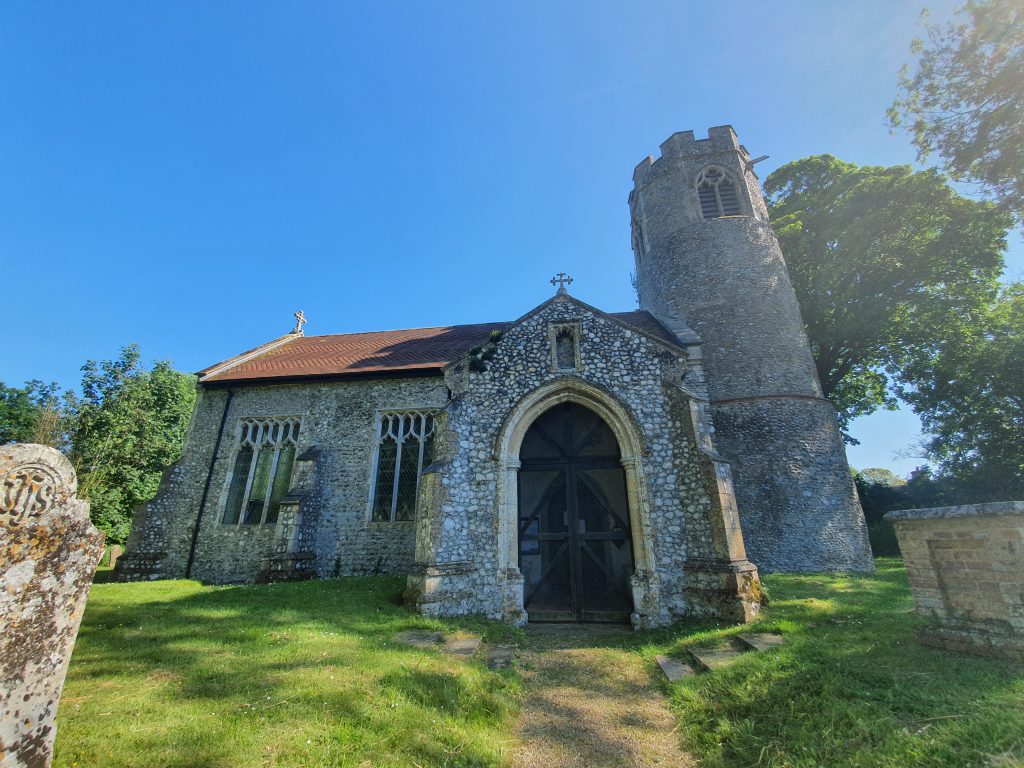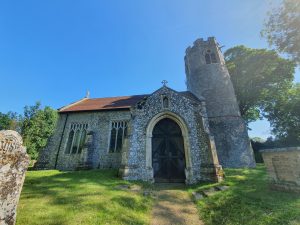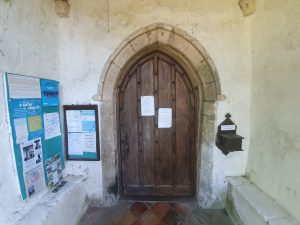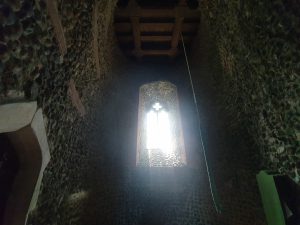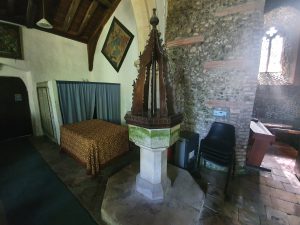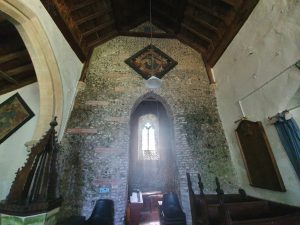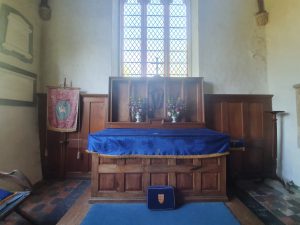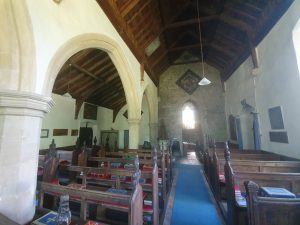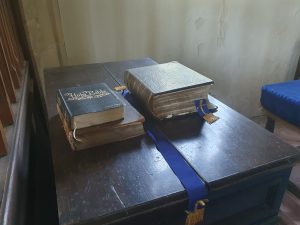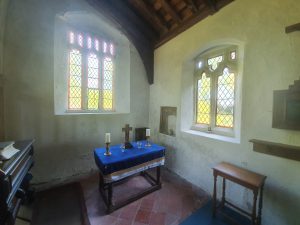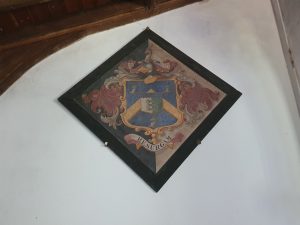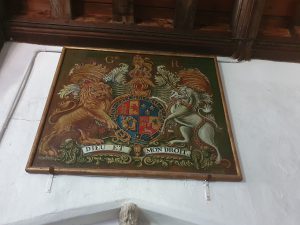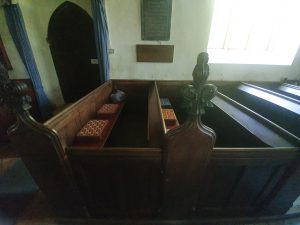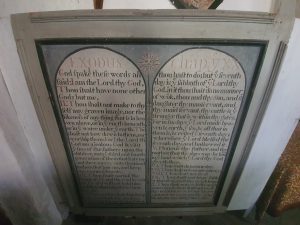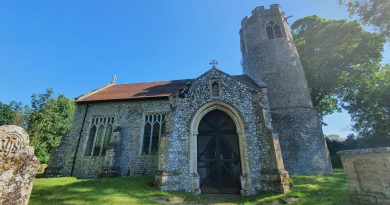Matlaske – St. Peter’s Church (Interior)
I wrote about the exterior of St. Peter’s Church in Matlaske a couple of weeks ago, but the interior was certainly no less interesting.
The door in the north porch is medieval, one of many survivors in the church dating to that period. There was a porchway on the other side of the church as well, but that was bricked up and the space turned into a vestry.
The nave of the church and the south aisle on the right. The roof of the nave was reconstructed in 1878 as part of the renovations and restorations to the church. The roof of the south aisle was reconstructed in 1710, as this is noted by a tablet on the wall, although has since been restored again.
The inside of the tower, which dates from the Saxon period.
The font and cover, which are both from the medieval period.
I can’t recall seeing such an historic join between the nave and the tower, all of which dates from the Saxon period. I very much liked seeing this, I could almost imagine this being constructed over 1,000 years ago. It was also quite a chunky construction, with the tower walls being four feet wide in places.
This was the end of the nave, but when the chancel fell down in March 1726, it was brought forwards to be used as the new chancel.
It’s clear that there are some maintenance issues that the church need some funds to fix.
Looking back towards the tower, the interior feels bright and spacious.
I like that the church feels comfortable leaving these old books out and I hope that no-one breaks that trust.
The private chapel for prayer and the church history mentions that this is the Jacobean communion table from the chancel that fell down.
A funerary hatchment, which would have been hung on the wall of the deceased’s house for a few months, before being moved into the church.
The Royal Arms which are for King George III and date to 1801.
A boxed pew arrangement still in situ.
This is the old commandments board which would have been located elsewhere in the church, but it has been repurposed to hide a cleaning cupboard.
Anyway, this is a beautiful church and in a peaceful part of Norfolk. I liked very much that an effort had been made to open up the church and also to explain its history. The collapse of the chancel many centuries ago is unfortunate, but I do like how they’ve been able to keep some of the stones which fell to ensure that its story isn’t entirely forgotten.

